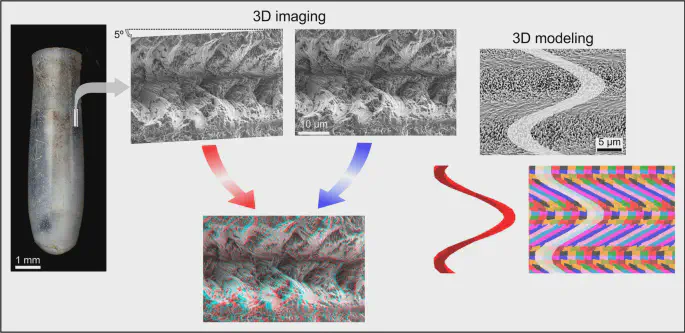Helical crystals in the shells of sea butterflies and adaptation to flow
With their flapping wing-like appendages, sea butterflies are unique inhabitants of the open ocean. These pelagic snails are active swimmers, but also drifters, which makes them exposed to a diverse range of flow regimes around their shells and their bodies. Some sea butterflies have developed shells made of crystal fibers that coil in perfect helices of a few nanometers. These enigmatic helical crystals have been the topic of intense discussion by material scientists, and their helical nature has been questioned. Now, thanks to collaborative work between Naturalis Biodiversity Center, the University of Granada and the AGH University of Science and Technology in Kraków, we provide unambiguous evidence that the calcium carbonate fibers secreted by sea butterflies describe true helical trajectories during growth. Shells of sea butterflies are especially resistant to damage and crack propagation, they are also a highly anisotropic biomaterial, assuming different mechanical properties in different directions. The helical fibers can thus be considered an important trait in the adaptation to a pelagic lifestyle, giving maximum strength and flexibility to the thin and lightweight shells of sea butterflies.
